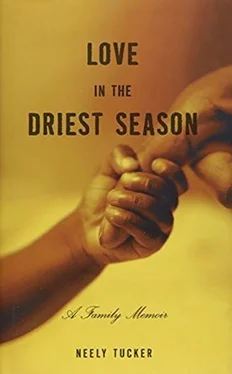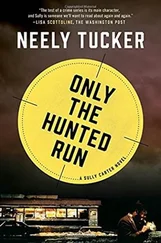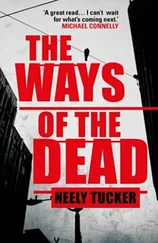Thirteen infants were dead in six months, the worst mortality rate in Chinyaradzo’s history. There was little Mesikano could do but get used to it. There was no money to train her young staff. Many of them were teenagers or twenty-something girls who had been raised at the home and had nowhere else to go. They were officially known as trainees in a one-year course called “Elementary Hygiene and Child Care.” In reality, they worked for room and board and the equivalent of five American dollars per month. There was no money for medicine, except what donors happened to provide. As the AIDS crisis wore on and the death toll of young parents mounted, the numbers of abandoned children soared. Chinyaradzo was becoming something it was never intended to be-a dumping ground for unwanted children.
“When I started in the nineteen-seventies, we just didn’t have abandoned children,” Mesikano said. “Now, ninety percent of the children we have are abandoned, no mother, no father. It seems impossible to me but it is true. Others have one relative, but who cannot care for them. We were set up to be a place for infants, a stopgap. Then the maximum age was raised to five. Then to twelve. Now, to be honest, we raise a lot of children. There’s no place else for them to go.”
Chinyaradzo’s children were wards of the state, last in line for treatment, care, and medications in the nation’s slowly deteriorating health care system. With no money for vitamins, tests for HIV were out of the question, and for more than financial reasons. There was no way to treat it. The fear attached to the disease was almost literally unspeakable. The scale of death was something lifted from the realm of Poe; the denial approached the world of Kafka, and still there were no guidelines for health professionals or caregivers to be tested for their own HIV status. Mesikano not only had no idea which of her infants was HIV-positive, she had no way of knowing if any of her young workers had the disease either, and thus was helpless to monitor the spread of the disease through the ward. The bitter truth came at the end of such calculations-even if Mesikano could have had every child tested for HIV, she knew in her heart that she would choose not to do so. The tests used in Zimbabwe, the ELISA and Western Blot, were outdated, and often gave false results, either positive or negative. Mesikano knew that for a child to test positive was to condemn the toddler to a quick death-the stigma was so deep, and the ignorance of how to handle AIDS patients so profound, that she was certain that any child who tested HIV-positive would be left to die.
The deadly cycle of ignorance, fear, and disease did not take long to run its course. Rejoice Neshuro, her name so pretty but her body so contorted, died in the hospital of dehydration. Then Nyasha Dziva died of pneumonia and dehydration. Workers were helpless to stop Abigail Mazviona’s diarrhea. A few days later, she began vomiting. They didn’t know how to stop that either. She spit up until she couldn’t anymore, and then she died.
Sixteen children were dead in seven months.
The calendar turned to midwinter in Zimbabwe, when the temperatures drop into the low forties at night. In Harare, at more than four thousand feet above sea level, the chill can go to the bone. Chinyaradzo had no central heating, like most places in Harare. Its concrete-block walls and tiled floors held little warmth after sundown. The infants would be bundled into layers of heavy knit clothes and tucked under blankets, but the chill worked its way into their lungs.
In crib number two, lost in a green knit outfit and bonnet, the girl-child did not thrive. She began to turn away from her milk. One day, she threw up. Then again. Then over and over, crying and wailing as she spit up whatever was in her stomach. No remedy could stop it. Her bowels turned to diarrhea. The hospital van came for her, and she was rushed to the hospital’s intensive care unit. She was badly dehydrated and had lost nearly a pound since being brought to the orphanage. She spent seven days in the ICU.
Then she was returned to Chinyaradzo.
She took a little milk. She did not cry so much. But neither did she smile or giggle. She scarcely responded when touched. Workers noticed this and tried to coax a grin from her, but they had little time for just one child, given the poor health of so many.
Then one morning the child stopped eating altogether. Her temperature soared to 104 degrees. She labored to breathe. She would open her mouth to cry out but no sound would emerge. She was rushed back to the hospital and again placed in the intensive care unit. Again she stayed for seven days.
The doctor wrote one line across the top of her dismissal papers: “Feed this child!” Her weight had dropped to four pounds, twelve ounces. Her growth chart, plotted on a grid, was supposed to gradually head up, like an incline. Instead, it plunged downward like a ski ramp.
Upon her return to Chinyaradzo, her lungs expanded and then expanded again, trying to draw in more oxygen. They became infected with a virus that would lay undetected until it developed into full-blown pneumonia. Her bronchial tubes became infected and inflamed. Her heart, weakened by severe malnutrition that was turning to marasmus, beat ever faster.
Marasmus describes a condition in which the body, starved of food, begins to take molecules of protein from muscle tissue and use it to fuel other bodily functions, burning a sort of emergency gas tank. The condition had stripped her emaciated frame to four pounds, three ounces.
In short, her body was now eating the only thing it could: itself.
BEFORE I LEFT the United States in 1993, I had known a couple of friends of friends who had died of AIDS. In Zimbabwe, it seemed everybody I met had lost at least one, if not several, family members to the disease. By 1997, Timothy Stamps, the nation’s health minister, said five hundred Zimbabweans were dying of AIDS each week in a nation of just eleven million. He likened it to “the crash of a jumbo jet each week, every week.” There were more than sixty thousand children who had lost both parents, and more than half a million who had lost at least one.
Vita and I had heard these stories, initially thinking they were gross exaggerations. The country seemed too peaceful, too complacent for such waves of death. Zimbabwe was poor and had its problems, but on balance it was one of the most developed, least troubled nations in sub-Saharan Africa. This earned it the informal sobriquet “the Switzerland of Africa,” which European diplomats counted as a compliment. Their counterparts from West Africa said it with a sigh; many of them privately considered Zimbabweans to be some of the most boring black people on earth.
But that was of little consequence. Zimbabweans had walked a hard road from oppression to independence, and in just two decades they had succeeded in carving out a solid future for themselves. Harare looked just like what it was-a small town built by Rhodesian colonialists, a kind of ersatz British transplant-but it had a sleepy charm. A few modern office buildings and hotels formed a modest skyline. Outside of that ten- or twelve-block area, few buildings were more than three stories. The light industries were all on the south end of town, along with the poorest townships, which were now politely referred to as “high-density suburbs,” although they were all within the city limits. The “low-density suburbs” were to the east or north of the city center. Most of the houses were one-story, ranch-style places. They had been built in the 1940s to 1960s-the older ones tended to have tin roofs-and realtors cheerfully advertised they had been built with asbestos.
There was an enclosed mall downtown, next to the Meikles, Harare’s best hotel. Across town, low-slung strip shopping malls featured ice cream shops, pizza delivery outlets, and chain grocery stores, including a French franchise called Bon Marché, where you could pay with a swipe of your credit card. There was the corner post office, a sprinkling of good restaurants, churches, hospitals, golf courses, tennis courts, and a health club or two. Two shopping centers featured terrific movie theaters, as nice as or nicer than most in the United States.
Читать дальше











